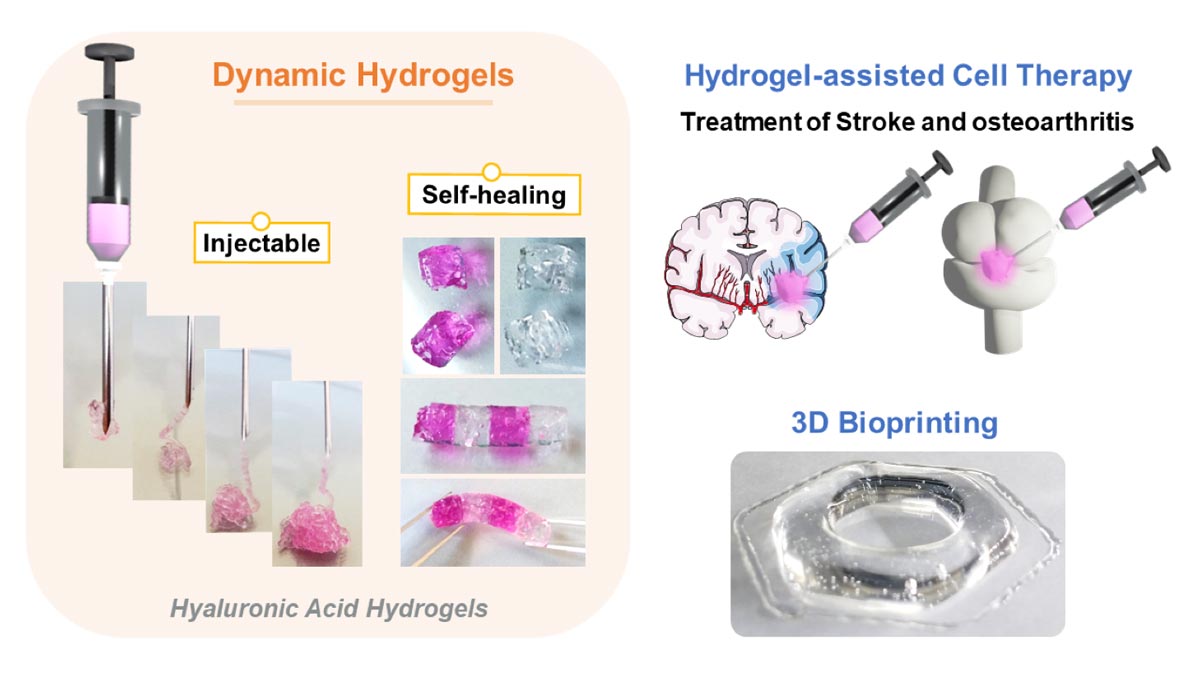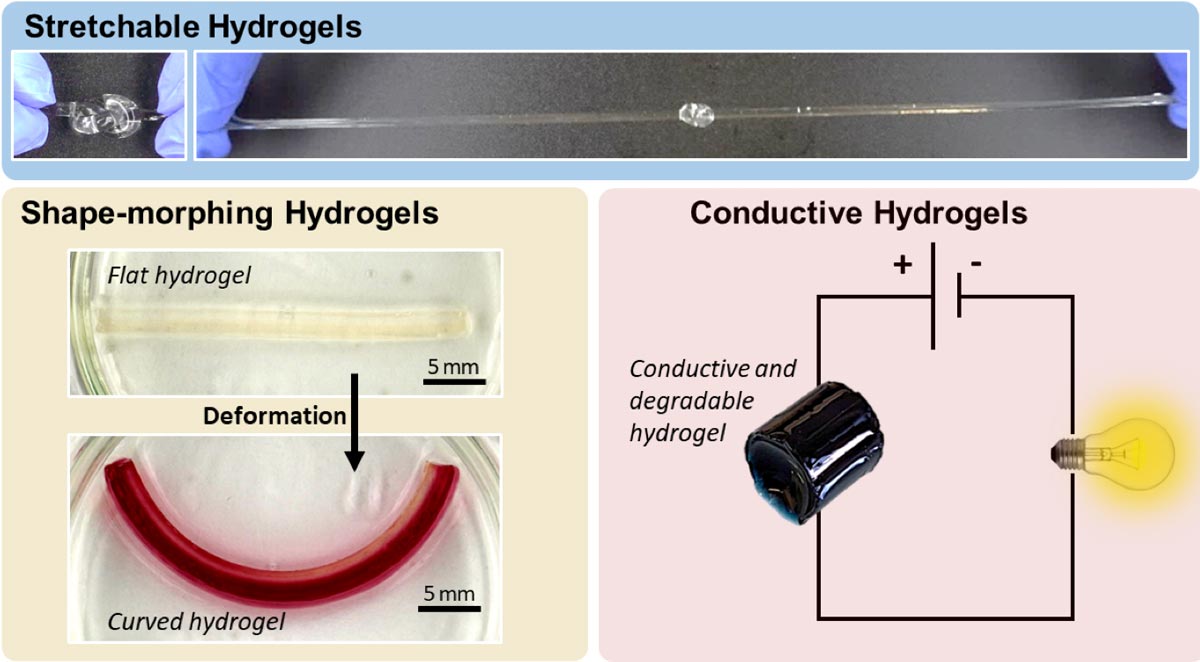Dynamic hydrogels for cell therapy and 3D bioprinting.
Dynamic hydrogels are polysaccharide networks which are cross-linked by reversible covalent bonds granting them unique properties. These hydrogels are able to self-heal after rupture and can therefore be used as injectable biomaterials for cell therapy, and printable inks for 3D bioprinting.
These hydrogels have the potential to significantly improve cell therapy by providing cells with a biomimetic scaffold that increases their survival after implantation.
Moreover, these hydrogels, loaded with cells, can be printed using micro-extrusion to produce 3D constructs that mimick the complex structure of native tissues.

Functional hydrogels
The grafting of new chemical functionalities onto polysaccharide backbones can be advantageously used to design functional hydrogels with stretchable or shape-morphing properties as well as electrical conductivity.
Stretchable hydrogels are hydrogels that can undergo large elongations under stress. Stretchable, biodegradable hydrogels can be used in wearable or short-term implantable devices for wound healing applications or for the monitoring of physiological cues.
Shape-morphing hydrogels can change their shape in response to an external stimulus (temperature, pH, humidity, presence of certain molecules). They are particularly attractive for applications in soft robotics and tissue engineering. Our work on the chemistry and architecture of these systems allows us to control the triggering and the amplitude of their deformation.
Conductive hydrogels have been obtained from cross-linked polysaccharides incorporating a conductive polymer. Their transient nature enables the development of advanced biomedical devices such as monitoring systems that eliminate the risks associated with surgical explantation, stimulators to accelerate tissue repair as well as temporary drug delivery systems.

Nanocarriers for the controlled release of active substances
The self-assembly of modified polysaccharides can be controlled to obtain different types of stimuli-reponsive nanoparticles:
Dynamic pH-sensitive nanogels. The association and dissociation of these biocompatible particles are fully controlled by the pH of their dispersing medium.
Theranostic nanogels that are formed by heat-induced self-assembly of modified polysaccharides can be used for Boron neutron capture therapy combined with near-infrared fluorescence imaging of cancers.
Magnetic nanobeads. These particles, obtained upon the deposition of amphiphilic polysaccharides on the surface of magnetic hydrophobic cores, can encapsulate hydrophobic active molecules, while forming a stable dispersion in a physiological medium. Such systems can be guided to the desired location using an external magnetic field.




